ADVERTISEMENT

Is a Secret Gold-Buying Spree the Real Cause of the 2020 Gold Price Surge?
If you’ve wondered why the rich get richer while the poor get poorer, now’s the perfect example of why. Already yellow metal is on the move.
The price of gold went up by 32% this year, hitting $2,000 per oz. As a result, gold got ranked as one of the world’s best-performing assets and became an attractive investment for many investors. But as experts suggest, gold is still cheap for now. It’s projected to hit $3,000-$7,500 per oz in the near future.
For the first time in a long time, international headlines have been focusing on gold. The worldwide popular media can barely keep up:
new record after
blowing past
$2,000 per ounce.”

prices to
hit $5,000,
economists say.”

ultimately
soar to $7,500
or more”

If we take a look at historical data, we can see that gold has outperformed stocks by a factor of nearly 4 to 1 over the past 20 years.
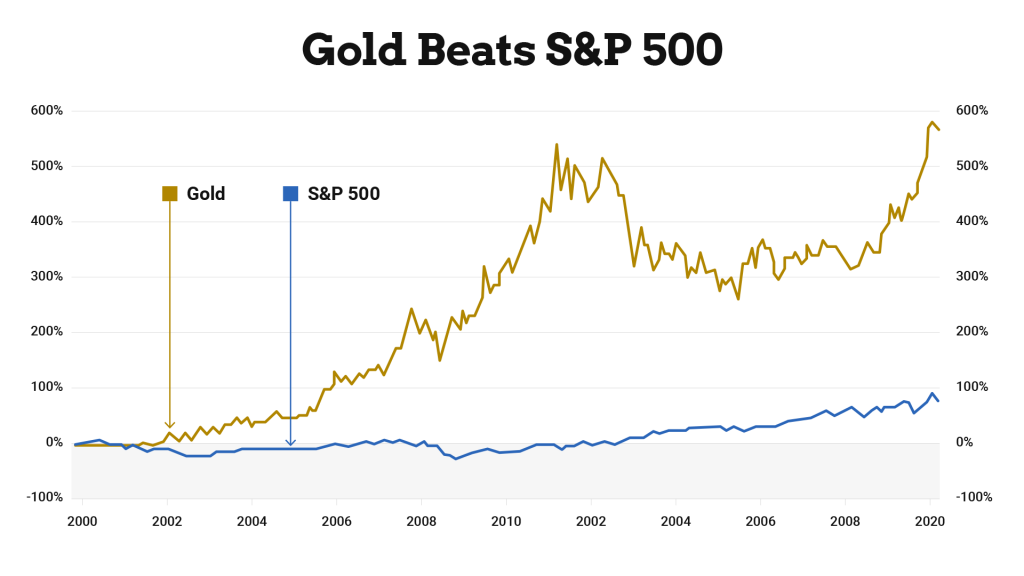
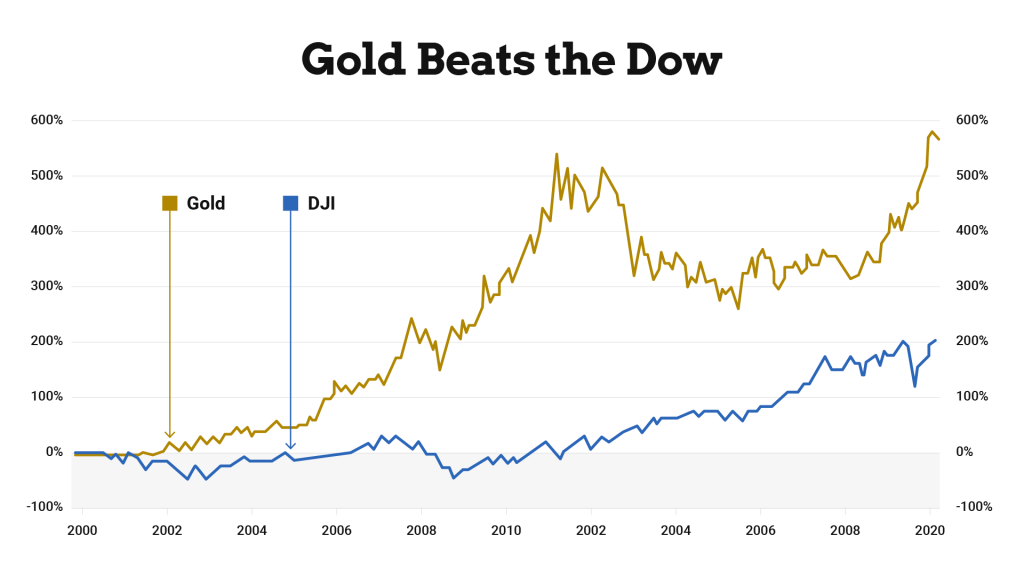
But look at this shocker. Gold has even outshined the tech-heavy Nasdaq by a stunning 6 to 1!
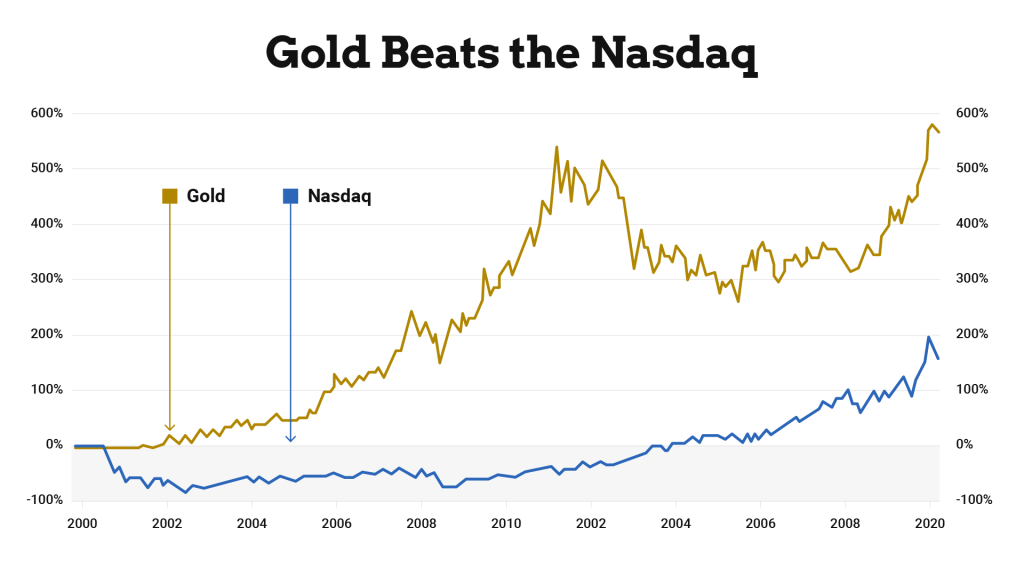
These charts tell a story that the public has missed for years now. One that, if you heed, could reward you handsomely.
While the public at large has missed it, the biggest players in finance haven’t.
Bloomberg highlighted that central banks are purchasing gold at the fastest pace we’ve seen in half a century.

BUT WHY ARE THEY DOING THAT? To answer that, let’s start by reviewing what happened back in the ’70s that caused gold to soar.
Initially, every American owned gold, using it as a regular currency. Then in 1933, President Roosevelt devalued it and banned owning gold. However, central banks still had gold reserves to settle their accounts.
In 1974, president Gerald Ford lifted the ban on gold, and millions of Americans rushed to own gold again. As a result, gold prices soared from $35 an ounce all the way up to $850.
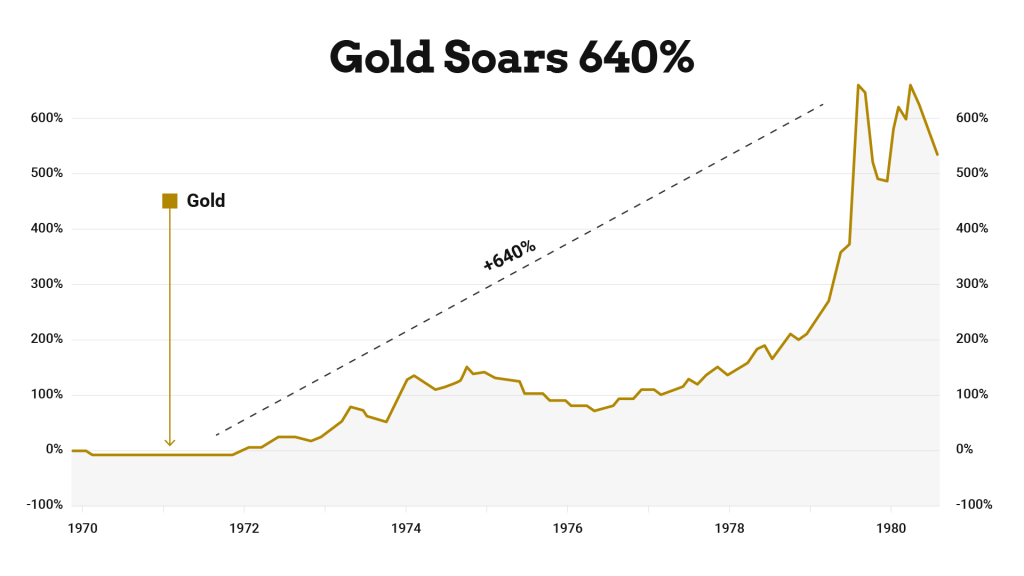
One of the few people publicly pounding the table on gold is a multi-millionaire and legend of the gold market. Even back in 2002, he said:
“The way I see it now, gold is not only going through the roof, it’s going to the moon.”
But why is gold increasing at such a fast pace? Here’s what’s happening behind the scenes, influencing the price to take off:
- > The People’s Bank of China increased its bullion reserves to a total of 62.45 million troy ounces.
- > The Central Bank of Russia got rid of 50% of its dollars to buy 8.8 million troy ounces of gold bullion.
- > Poland bought 3.2 million troy ounces in the second quarter, the most by a central bank since 2009. And that’s just a snapshot of the many nations on a gold-buying spree.
In total, over the last two years, central banks have bought 20.9 million troy ounces of gold. Now you’re probably wondering, why are the central banks on this shopping spree?
It’s about geopolitics and economics. And right now, according to Adam Glapinski, the governor of the National Bank of Poland, “gold symbolizes the strength of a country.”
As such, experts are predicting gold could reach $5,000 and even $10,000 per ounce. The needle’s already moving, and we could see mega-returns beyond what’s happened in more than 50 years.
So What’s The Best Way To Invest?
While technically you can directly invest in gold, Doug Casey, a legend of the gold market, says that if you buy raw, physical metal, you could be leaving a lot of money on the table. He says the best returns come from investing in gold stocks, shares of gold mining or exploration companies that mimic the price of gold.
If the price of gold goes up, shares of these companies tend to go up and investors profit by receiving dividends or selling them to other investors for quick gains.
How to Choose a Gold Stock to Invest In?
That’s why the last thing you should do is to go out and buy a random stock.
To make a smart decision, you need to know a few factors about the company and its mining project. For instance, the first thing you should always look at is where the project is located. Obviously, investing in a company that is exploring on land that hasn’t proven to be beneficial is not wise.
One gold exploration company that has stood out to us due to its “dream location”.
-
1. This little-known company is located in the top-tier gold mining jurisdiction of Nevada, USA.
The United States is the 4th largest gold producing country in the world. Moreover, Nevada is accountable for over 70% of gold production within the United States.
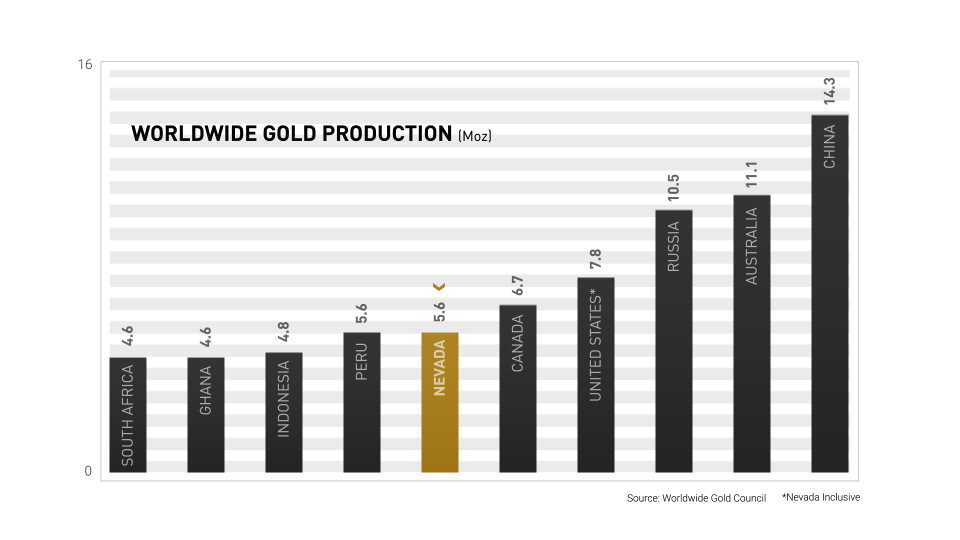
Source: Golden Independence Presentation
According to the Annual Survey of Mining Companies, Nevada ranks as one of the top 3 mining jurisdictions globally. That’s why the location is attractive to most gold investors.
Our feature company located about a tennis balls throw away from Nevada Gold Mine’s open pit. This gives them some significant advantages, not only in mineralogy but in permitting.
Often exploration and mining companies are harassed and ultimately shut down by environmental groups. But because they are within Nevada Gold Mines plan of operations, they can fast track development.
Another advantage is that they’re located in a well-industrialized area with road and rail access. Staff can simply drive to the mine, which is only 15 minutes away from the nearest McDonalds. This comfortable location allows the company to save its resources and focus on producing gold.
Compared to similar companies at their stage, they are ahead of peers and already permitted. Their drill program is underway, and the property already has a historical resource of 1,072,600 ounces of gold. That’s more than some of their competitors who are even farther into the mining process.
They’re also set to conclude a drilling project in a few months and evaluate the final results. It’s predicted that by the end of the project, the above-mentioned number of gold ounces could double or even triple.
-
2. This company is greatly undervalued compared to its peers.
If we compare the up-to-date data, we can see that the company we’re highlighting is already ahead of many comparable gold exploration companies valued much higher.
Right now, they have a market capitalization of under C$16 million (US$11.7 million), which is a fraction of earlier-stage exploration companies with values of C$40–50 million. These are companies that do not even have defined resources and therefore are a much higher risk.
They are also grossly undervalued for the gold ounces they already have defined with a valuation of C$14 per ounce (market capitalization less cash divided by ounces) compared to resource-stage peers trading at over C$36 per ounce and development-stage peers up to C$106 per ounce. This is a relatively low valuation as the company has the requisite infrastructure in place with a drill program already in progress.
Simply put, even if they find no more gold, there is still an opportunity for a significant return just by its share price catching up with the peers. As it stands now, their drill program is set to expand the resource significantly, which will only multiply shareholder returns.
What Does This All Mean For Investors?
It means that they are currently at a very attractive entry point, trading at a 60% discount to its peers. But this could be just beginning. As gold soars past $3,000 an oz, $5,000 an oz and glides beyond, the growth could be extraordinary.
This is a fast-moving story that deserves your immediate attention. I urge you to sign up for our newsletter and learn the name of this little-known gold mining junior, before more news comes out.
Legal Notice: This work is based on what we’ve learned as financial journalists. It may contain errors and you should not base investment decisions solely on what you read here. It’s your money and your responsibility. Nothing herein should be considered personalized investment advice. Although our employees may answer general customer service questions, they are not licensed to address your particular investment situation. Our track record is based on hypothetical results and may not reflect the same results as actual trades. Likewise, past performance is no guarantee of future returns. Don’t trade in these markets with money you can’t afford to lose. Investing in stock markets involves the risk of loss. Before investing you should consider carefully the risks involved, if you have any doubt as to the suitability or the taxation implications, seek independent financial advice. Invictus News expressly forbids its writers from having a financial interest in their own securities or commodities recommendations to readers. Such recommendations may be traded, however, by other editors, Invictus News, its affiliated entities, employees, and agents, but only after waiting 24 hours after an internet broadcast.







